Mademoiselle Privé”, these two words appear on the door that led into Mademoiselle Chanel’s Creation studio on the third floor at 31 rue Cambon in Paris.
Today it is the name of an exhibition that invites us to open the door to CHANEL’s creation, offering an immersion into the three original creative worlds of the House: Haute Couture, High Jewelry and CHANEL N°5 perfume.
Following London, Seoul, Hong Kong and Shanghai, this fifth chapter of the exhibition is being held at the B&C Hall-Tennoz in Tokyo, from October 19th to December 1st, 2019, for an exceptional journey into the most intimate sphere at 31 rue Cambon: Mademoiselle Chanel’s apartment.
Through a revisited and exclusive scenography, the exhibition puts into perspective the creative work that goes on behind the Studio door marked with the words “Mademoiselle Privé”, and the imagination expressed behind the mirrored door of the apartment, that have, in Tokyo, become one and the same intimate space, exalting CHANEL’s designs.
31 rue Cambon, the epicentre of creation
At 31 rue Cambon, it all begins with a staircase, the veritable backbone of the House that connects the boutique on the ground floor, the Haute Couture salons and Mademoiselle Chanel’s apartment with the Creation studio and the Haute Couture ateliers.
On the second floor, the mirrored door opens into Mademoiselle Chanel’s apartment: a “luxury bivouac” composed of the four rooms in which she worked, received her friends, read for long hours, dreamt, but never slept, returning instead at the end of each evening to her room at the Ritz Paris.
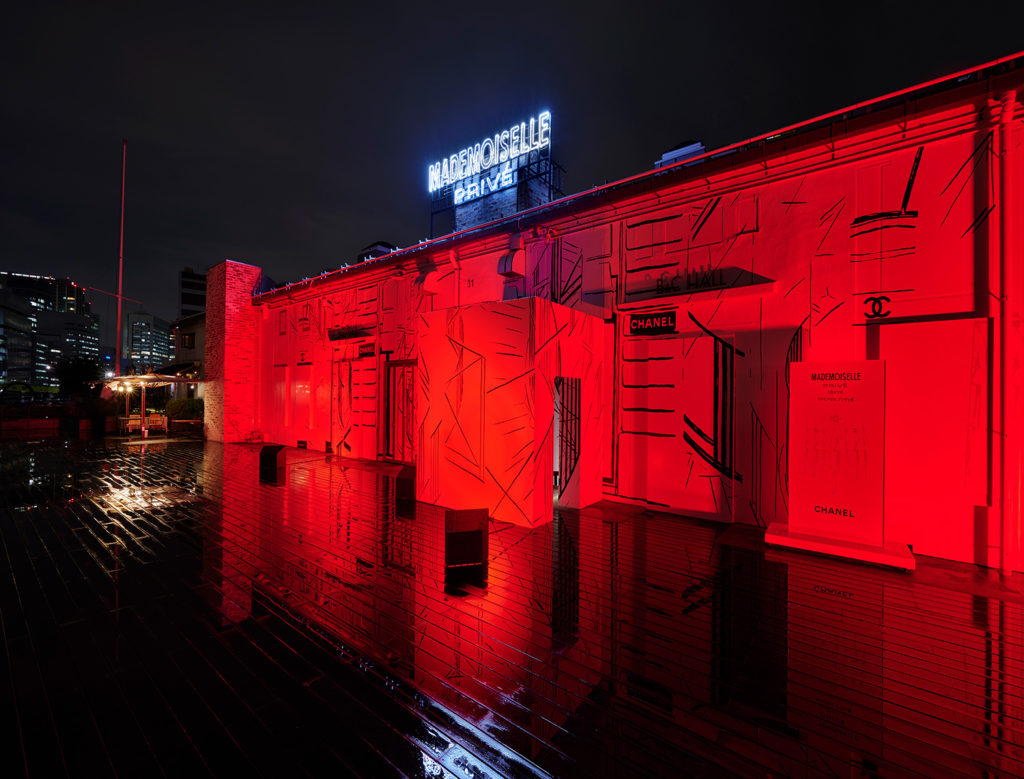
Here, in this space that she decorated with lacquered Coromandel screens, rock crystal chandeliers and Venetian mirrors, surrounded by precious objects and her beloved books, Mademoiselle Chanel deployed the aesthetics of her imaginary world, masterfully organising the space with the same natural sense of daring that characterises her eternally modern style.
Classified as a historic monument in 2013, we can almost feel the presence of Mademoiselle Chanel in this apartment as it reveals the depth of her character and her life’s path. It is also a place of inspiration for the creative worlds of CHANEL. Tonalities, atmosphere, art objects and furniture, every element here can be seen as an integral part of CHANEL’s aesthetic vocabulary, magnified by Karl Lagerfeld and Virginie Viard, who, each in their own way, offer their interpretation of the original world of Mademoiselle, anchored in a contemporary vision.
Creations by the House of CHANEL resemble its founder, bearing within them a vision of immense freedom and infinite sophistication. The creative legacy of Mademoiselle Chanel adheres to an absolute modernity, exemplified by the legendary little black dresses, the precious evening gowns in lace or embellished chiffon and the tweed suits, emblematic pieces from the House’s vocabulary that are reinvented with every collection. CHANEL Haute Couture is a laboratory of dreams at the service of creation. Behind the perfection of each silhouette is the creative dialogue between all the métiers which contribute to making it: the vision of Karl Lagerfeld and today Virginie Viard, Artistic Director of Fashion collections, the work of the Creation studio teams, the savoir-faire of the Haute Couture ateliers and the CHANEL Métiers d’art ateliers, the embroiderers, feathermakers, floral paruriers, glovemakers, shoemakers, milliners and goldsmiths. Hundreds of patient hours, fittings of an absolute precision, ground-breaking materials, unique weaves, and reinvented gestures that strive towards this ideal of beauty so dear to the House.
The icon of CHANEL perfumery around the world since its creation in 1921, the success of CHANEL N°5 fragrance has never been refuted. It was in Grasse, the historical cradle of French perfumery and where some of the most beautiful flowers that go into the N°5 composition are still cultivated today, that this perfume saw the light of day in perfumer Ernest Beaux’s laboratory. For Gabrielle Chanel, he created an unprecedented work of olfactive architecture… A bouquet of more than 80 scents whose precious notes (May rose, jasmine, ylang ylang, sandalwood) were blended with aldehydes in such considerable quantity for the first time in history. It was the aldehydes that enhanced the scents by removing any overly precise contours, and the aldehydes again that gave this perfume its mystery and its subtlety, taking perfumery into the modern era. When Gabrielle Chanel and the perfumer Ernest Beaux launched CHANEL N°5 in 1921, they were offering much more than just a new fragrance: this was an olfactive revolution.
Synonymous with luxury and elegance, this fragrance with its golden reflections, contained in an architectural bottle, has traversed time without ever losing its modernity. A radical creation in every way, reflecting the personality of Gabrielle Chanel, N°5 has become the archetypal perfume.
By creating her one and only High Jewelry collection “Bijoux de Diamants” in 1932, Mademoiselle Chanel established an innovative and daring approach to High Jewelry while provoking another revolution. Just as she had done with Haute Couture and CHANEL N°5 perfume, Mademoiselle developed a unique and previously unseen vision: supple and lightweight settings, the absence of visible fastenings, multiple ways of wearing them. A diamond comet drapes into the hollow of the neck like a scarf, a large articulated feather brooch straddles a shoulder, fringes of diamonds are worn as a tiara, while a shower of stars cascade over a décolleté… The founding principles of the 1932 “Bijoux de Diamants” collection have lost none of their relevance or timelessness and continue to characterise CHANEL’s High Jewelry creations today. But the original aesthetic vocabulary has been enriched with new elements: the lion, Mademoiselle Chanel’s astrological sign, the camellia, which she made her emblematic flower, and motifs borrowed from Chinese Coromandel screens all allow for an expression of creativity that is never limited by technical constraints.
Articulated around five sequences staged over two floors, each one based on an emblematic part in the apartment and a chromatic ambiance, the exhibition mixes graphic frescoes with Haute Couture silhouettes created by Karl Lagerfeld and Virginie Viard, magnified by the exceptional savoir-faire of CHANEL’s Métiers d’art, High Jewelry pieces, re-editions of the legendary “Bijoux de Diamants” collection and recent creations, as well as the historic and contemporary objects that tell the story of N°5 since its creation nearly 100 years ago.
This immersion to the very heart of these creative worlds of the House is accompanied in each sequence by a highlighting of the savoir-faire that serves the beauty of Haute Couture. The exhibition thus illustrates the synergy between the creativity of the Studio and the savoir-faire of the CHANEL Haute Couture ateliers and the fashion Métiers d’art, CHANEL’s inseparable partners. Together they contribute to the image of perfection, of daring and of modernity that characterises CHANEL.
CHANEL’s Métiers d’art are showcased at the entrance of the exhibition with an interpretation of the door to the Creation studio, embroidered by the House of Lesage. This focus is also expressed with each of the doors that lead into the five sequences of the exhibition, reinterpreting an embroidery motif made by the CHANEL Métiers d’art and inspired by an Haute Couture silhouette of the sequence.
Dramatized by the scenography, these creations conjugated with the Haute Couture silhouettes on display, reveal all the beauty of these métiers d’art without which the dream that is Haute Couture could not be fully expressed.
Passing through one chromatic atmosphere to the next, from one inspiration to the next, the exhibition brings together the silvery white shimmer of the mirrored Art Deco staircase at 31 rue Cambon with the sandy beiges of the large suede sofa and the amber-hues of leather bound books in the library, the deep blacks of the lacquered console tables in the dining room with the red of the writing desk and the baroque golds of the grand mirror hanging above the mantlepiece in the salon.
MIRROR WHITE
The mirrored staircase
The staircase is omnipresent in the world of Gabrielle Chanel, from the memory of the staircase at the Cistercian Abbey in Aubazine which inspired her La Pausa villa on the Riviera to the remarkable staircase in her couture house at 31 rue Cambon in Paris.
This legendary staircase, perfumed with CHANEL N°5 fragrance every morning before Mademoiselle Chanel’s arrival, and at the top of which the couturière liked to sit and watch her runway shows without being seen herself, is like an aesthetic manifesto: Mademoiselle Chanel had the walls lined with mirrors, infinitely multiplying the reflections and diffracting the perspectives just like a cubist painting.
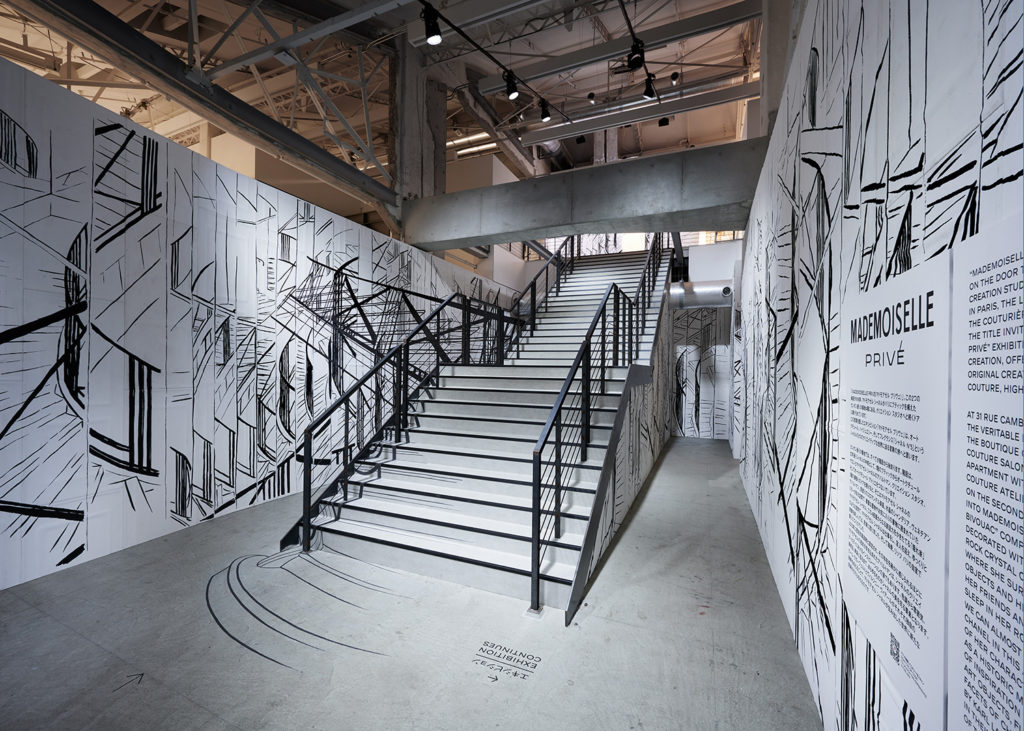
With its black wrought ironwork, its steps soberly dressed in beige and white, its mirrored walls, the staircase expresses Mademoiselle Chanel’s taste for sophisticated purity, luxurious rigour. On the second floor, the mirrors covering the double doors that open into her apartment mark the passage into the designer’s most intimate realm where an ambiance of pure baroque contrasts with the minimalism of the staircase, like stepping through the looking glass.
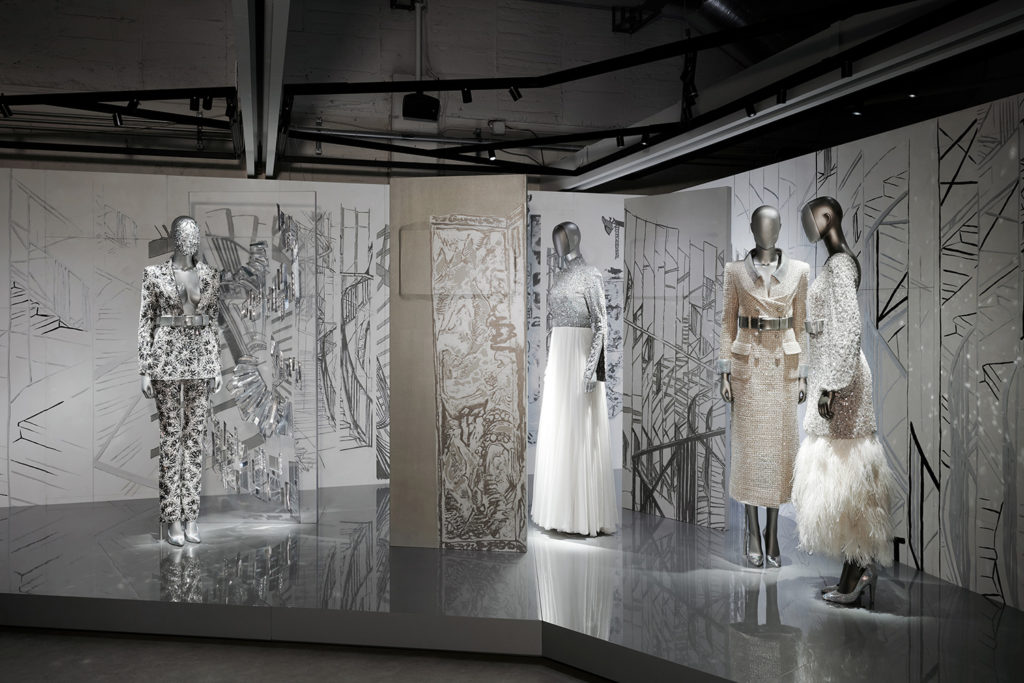
White at CHANEL
If white is among Mademoiselle Chanel’s favourite colours, it is also one of the basic colours of her aesthetic vocabulary, whether it is all-over white or white associated with black or silver. It was white cardboard trimmed with black that Mademoiselle Chanel used to dress her CHANEL N°5 bottle in 1921, then again in 1924 for her line of make-up. White for the silk pyjamas she created in 1918 as loungewear; white for the summery outfits imagined with a spirit of sportswear during the 1920s and 1930s; white for the trimmings that lit up her little black dresses, highlighted by the oriental shimmer of pearls.
In the 1950s, Gabrielle Chanel created CHANEL suits in white tweed, trimmed with black, in this same rapport of contrast where this time black emphasises the details of the jacket (the shape of the collar, the edge of the jacket, the pockets and the sleeves).
Ever since then, white has been one of the highlights of each Haute Couture show, interpreted by Karl Lagerfeld and Virginie Viard in a huge variety of materials – silk chiffon, tweed, organza – allowing it to express all of its nuances from matte white to luminous white with pearlised reflections, almost grey or silvery.
The tones are subtle as with this long trompe-l’œil dress in cloud grey silk chiffon from the Fall-Winter 2018/2019 Haute Couture collection created by Karl Lagerfeld.
Incandescent white is also the hue of the diamond magnified by Mademoiselle Chanel in 1932. “Bijoux de Diamants”, Mademoiselle Chanel’s unique High Jewelry collection, flouted every convention of craft and style. The first couturière to enter the very closed and masculine circle of High Jewelers, she innovated by imposing a daring vision of this ultimate luxury: lighter settings to emphasise the stones, jewelry without fastenings that can transform according to women’s desires, a whole new repertoire, sometimes poetic, sometimes abstract, always exalting the incandescent white of the diamond.
Enamoured with freedom and movement, when Mademoiselle Chanel created CHANEL N°5 fragrance she also designed a travel case to carry her perfume everywhere. This case in chromed nickel with its modern architectural lines was a perfect paradox: a masculine shaped container (reminiscent of the travel flasks found in men’s travelling accoutrements) carrying the most feminine of all fragrances.
BEIGE
The sofa
Beige dominated wherever Mademoiselle Chanel settled throughout her life, as she alone decided on the decoration of these homes each time. At the end of the 1920s, her Bel Respiro villa scandalised the locals in the small town of Garches, near Paris, with its beige façade and black lacquered shutters, breaking with tradition. At the beginning of the 1920s, installed at 29 rue du Faubourg Saint-Honoré in Paris, the furniture, curtains and carpets of her library were beige. This tonality dominated the decoration of her villa La Pausa on the Riviera. When she moved into her apartment at 31 rue Cambon, she covered the large sofa in the salon with a sand coloured suede – a fabric rarely used in furnishings then – and had a series of matching cushions in the same material stitched with diamond grids, like those that would characterise the quilted 2.55 bag created many years later. Behind this sofa where she would seek solace and read for many hours, the beautiful leather book bindings on her shelves are a fawn beige. Opposite the sofa, the large gilded wood armchairs are also covered with beige suede.
 The colour of wet sand on the beach at Deauville, at Biarritz or at the Lido where she would bask in the sun, Gabrielle Chanel appreciated the naturalness of this tonality said to be willingly neutral, with its masculine accents evoking tobacco and raw leather. She made this colour a vital element in her vocabulary for fashion, fragrance and beauty. The CHANEL beiges are numerous, deployed over a palette starting with the lightest shade, almost cream, to more sustained nuances such as honey and fawn.
The colour of wet sand on the beach at Deauville, at Biarritz or at the Lido where she would bask in the sun, Gabrielle Chanel appreciated the naturalness of this tonality said to be willingly neutral, with its masculine accents evoking tobacco and raw leather. She made this colour a vital element in her vocabulary for fashion, fragrance and beauty. The CHANEL beiges are numerous, deployed over a palette starting with the lightest shade, almost cream, to more sustained nuances such as honey and fawn.
Gabrielle Chanel’s first clothing designs of 1913 in jersey are beige, the natural colour of jersey. But very quickly this beige with its sportswear accents would be expressed with more sophistication, notably with the creation of the tweed suits that Mademoiselle proposed in the early 1920s, and then with the reopening of her Haute Couture house in 1954.
It was this ‘signature’ colour again that she chose in 1957 when she created the two-tone shoe in beige leather with a black toecap: the beige lengthening the leg while the black toe makes the foot appear smaller. This elegant beige, described by Mademoiselle Chanel as a colour that “always will be in fashion” has been reinvented with every CHANEL Haute Couture collection, imagined by Karl Lagerfeld and Virginie Viard today.
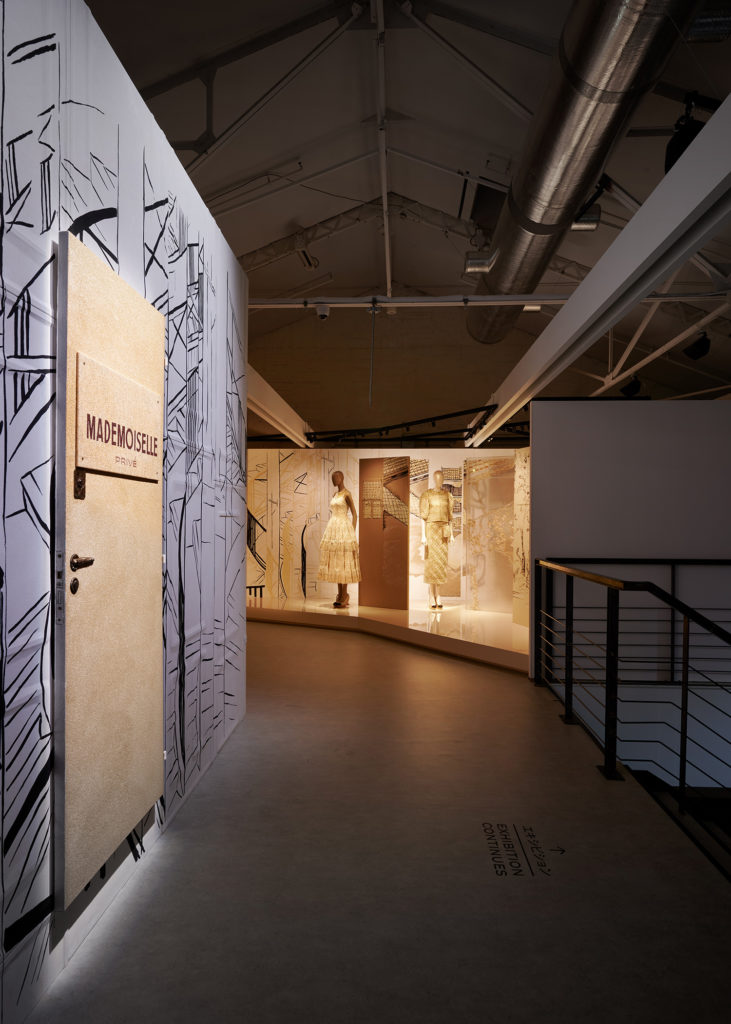
The delicate beiges of Haute Couture express themselves in the materials that imbue them with a great femininity. Pale beige, almost ecru, gives tweed all its softness. Crêpe, lace, tulle and chiffon exalt a palette of subtle nuances rendered precious by the work of the ateliers, as with this dress in chiffon pleated by the Lognon ateliers worn with a silk macramé top embroidered by the House of Lesage from the Spring-Summer 2016 Haute Couture collection.
Inseparable from the world of CHANEL and the emblematic silhouette of Gabrielle Chanel, pearls sometimes associated with diamonds are at the origin of some of the most beautiful High Jewelry creations, as with the cuff bracelet “Matelassé” with 1 189 diamonds and 308 Japanese cultured pearls.
In the 1930s Mademoiselle Chanel presented beige travel cases for her fragrance bottles: once again, she chose simplicity and her codes boldly stood out amongst the perfumery of the era. Beige is present in the world of perfume and beauty at CHANEL, from N°5 to the creation of the 1940 Beige perfume in 1930, as well as the Beige eau de toilette created by Jacques Polge in 2009 for CHANEL’s Les Exclusifs. It is also the name of a line of make-up launched in 2013, Les Beiges.
BLACK
The dining room
It was between her vast bright black Coromandel screens that Mademoiselle Chanel would entertain friends in her dining room at 31 rue Cambon. In this modestly sized room, she had imagined a sumptuously elegant décor, notably the big Louis XIII walnut parquet table set with golden shells and lions, as well as the two baroque console tables probably bought in Venice with gilded wood legs that represent the allegories of summer and autumn, and whose marble surfaces she replaced with black lacquered tops that play with light. Two octagonal mirrors and a crystal chandelier add to the sophisticated atmosphere that emanates from this ensemble. On the fireplace stands the bust of an English clergyman who happens to be Thomas J. Capel (1836-1911), the uncle of Boy Capel.
 It is probably the colour black that best embodies the visionary choices of Mademoiselle Chanel and her modernity. When, at the end of the 1910s, she diverted black from its traditional sartorial usages, Gabrielle Chanel measured her daring with precision: up until then, black had been the colour of mourning, of clergymen, nuns and servants. It was also a masculine colour that was both noble and severe, adopted as the royal colour in Europe, and then again by the dandies of the 19th century. Was it the memory of her time at the Aubazine Abbey and the black smocks worn by the orphan girls that once again led Mademoiselle to write her own story and that of women more generally? From the end of the 1910s, Mademoiselle Chanel made black dresses, but it was in 1926 that the elegant simplicity of the little black dress truly made its mark – and was unanimously hailed by the press. This black has served them as a haven both for day and beneath the lights of festive soirees ever since.
It is probably the colour black that best embodies the visionary choices of Mademoiselle Chanel and her modernity. When, at the end of the 1910s, she diverted black from its traditional sartorial usages, Gabrielle Chanel measured her daring with precision: up until then, black had been the colour of mourning, of clergymen, nuns and servants. It was also a masculine colour that was both noble and severe, adopted as the royal colour in Europe, and then again by the dandies of the 19th century. Was it the memory of her time at the Aubazine Abbey and the black smocks worn by the orphan girls that once again led Mademoiselle to write her own story and that of women more generally? From the end of the 1910s, Mademoiselle Chanel made black dresses, but it was in 1926 that the elegant simplicity of the little black dress truly made its mark – and was unanimously hailed by the press. This black has served them as a haven both for day and beneath the lights of festive soirees ever since.
Masterfully interpreted by Karl Lagerfeld and now by Virginie Viard, black remains a major creative axis that expresses all the radicality of the House style, from the minimalist to the spectacular, without ever losing its elegance.
Its tonalities are inseparable from CHANEL Haute Couture and vary according to the materials and textures: the depth of black velvet, the affirmed matte colour of crêpe or wool gabardine, the black evanescence and transparency of a chiffon or a lace, the lacquered black of satin or leather, the vibrancy of black when associated with white. In the Fall-Winter 2019/2020 Haute Couture collection, Virginie Viard gives black a special place, reaffirming its modernity as a colour closely linked to the aesthetic identity of CHANEL, notably with a bustier dress in black duchess satin and a trompe-l’œil effect petticoated skirt in black velvet with a plastron and tuxedo collar embellished with a bow.
“I want the jewelry to feel like a ribbon on a woman’s fingers,” Gabrielle Chanel said. In 1932, with her “Bijoux de Diamants” collection, she proposed a liberated and innovative approach to High Jewelry. In her hands, the diamond shimmered with a nonchalant elegance. Her graceful and lightweight ornaments voluptuously coiled around a neck or a wrist. Like a challenge to the savoir-faire of the jewelry workshops, she imagined ribbons of diamonds, emphasising the flexibility of loops and the interlacing of these delicate bows. The black satin ribbon prettily tied around the neck or the wrists of women in the 18th century became necklaces and brooch in diamonds and platinum.

A radical creation, a unique fragrance composed of luxurious materials, clean lines topped with a rectangular stopper whose cut corners echo the contours of the place Vendôme, a simple white label stamped with a black typography affixed to the bottle, CHANEL N°5 is a manifesto. Mademoiselle Chanel chose to dress it in a bottle whose sobriety contrasted with perfumes typical of the 1920s. It was then slipped into a white cardboard box trimmed with black. A love of the line, the one that follows the silhouettes imagined by Mademoiselle Chanel, the one that trims her suits. A line which perhaps reminded her of the Aubazine orphanage whose windows were also outlined in black.
RED
The writing desk
A red lacquered screen with muted tonalities and a small writing desk with a bookshelf behind it: here the books are bound in a deep red leather. Red is present in Mademoiselle Chanel’s apartment, contributing to the peaceful atmosphere further emphasised by the light filtered by the big pale curtains, always drawn. On the writing desk sits a clock with a red frame, a bouquet of camellias in rock crystal, a miniature model of a lion’s head, Mademoiselle’s astrological sign, a tortoiseshell fan and a set of Tarot playing cards.
Along with black, white, beige and gold, red is a favourite colour of Mademoiselle Chanel who appreciated its strength and its luminosity. “The colour of life and of blood” as she liked to say, the red in her fashion, beauty, perfume and High Jewelry was an enduring colour in the world of CHANEL. Mademoiselle Chanel loved to dress in red, and each of her runway shows were punctuated with a least one red piece. In May 1936, the artist Christian Bérard drew her in a red tweed suit for the magazine Vogue US. In the 1950s, Mademoiselle Chanel interpreted her tweed suit in the main colours she favoured, including a more or less bright or deep red. In February 1955, Mademoiselle created the 2.55 quilted bag with red leather interior and a small central pocket to hold a lipstick. The symbolic significance of red, linked to power, splendour and wealth, but also to celebration and seduction did not leave her indifferent. From coral to vermillion, from carmine to garnet, from ruby to purple, the spectrum of reds was invited into every collection by Karl Lagerfeld, such as this 3D suit lined with quilted red satin from the Fall-Winter 2015/2016 Haute Couture collection. Virginie Viard raises the tonality to a fuchsia ennobled with silvery pink painted by hand for a lace bustier dress and its bolero from the Fall-Winter 2019/2020 Haute Couture collection.

While red in CHANEL’s High Jewelry most often appears as a punctuation that takes shape as an important centrepiece stone, it is occasionally the pretext for exceptional creations such as this necklace composed of 59 strands of red spinel beads linked with a medallion set with diamonds and embellished with a blue tanzanite.
Often associated with red through its advertising campaigns (from Carole Bouquet’s red suit and Stella Warren as Little Red Riding Hood to the red carpet walked on by Nicole Kidman and the red dress worn by Gisele Bündchen), CHANEL N°5 perfume was, at the end of 2018, dressed in a red Baccarat crystal bottle, for a limited edition series evoking the materials that compose its eternally unrivalled fragrance. Through this unique edition, the legendary bottle and its daring olfactive composition reaffirmed their singularity by adopting an exceptional attire that can be read as a manifesto.
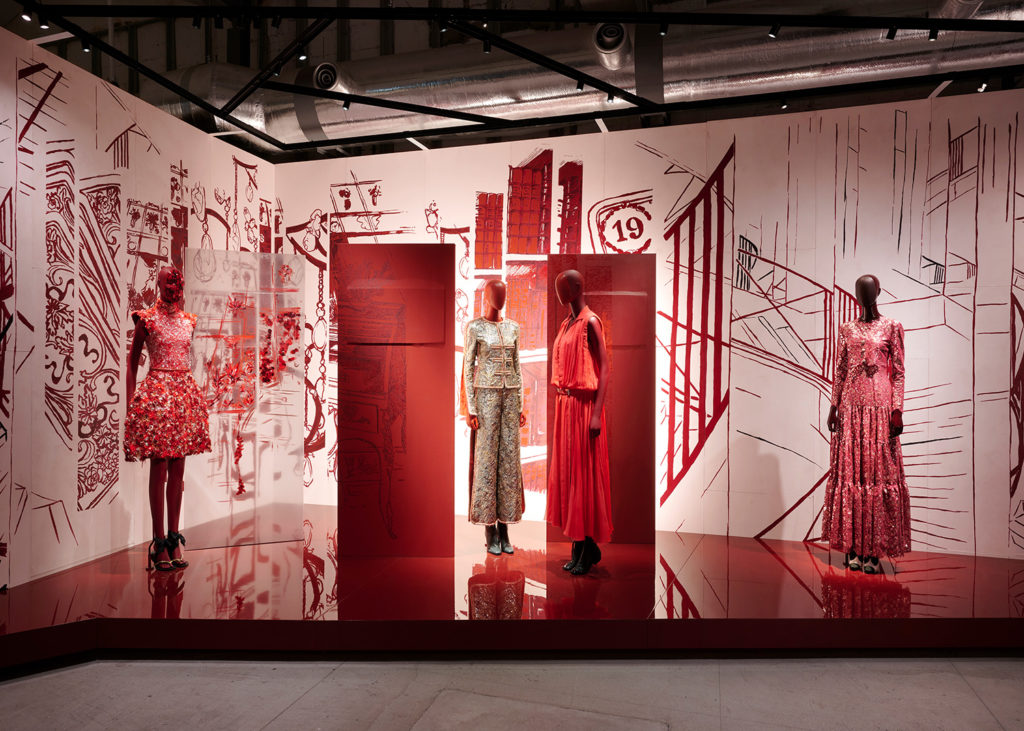
BAROQUE GOLD
The fireplace
Opposite the large sofa in the salon we find a fireplace framed by caryatids and gilded wood, where a fire crackled almost all year round – Mademoiselle Chanel loathed the cold. On the mantlepiece, she placed some of her favourite objects: a Buddha head, a Greek Venus and a pair of lions. At the foot of the fireplace are the beautiful cubist fire dogs in gold bronze made by Jacques Lipchitz in 1921, and a table with a base shaped like a wheat-sheath commissioned from her friend the goldsmith Robert Goossens, the wheat symbolising abundance – another talisman favoured by Mademoiselle Chanel, who was born in the middle of summer. The mirror above the fireplace reflects the warm light of the apartment accentuated by the walls swathed in an ecru fabric that Mademoiselle had brushed with gold paint. It also reflects the shimmer of the girandoles of the great rock crystal chandelier where camellias, the number 5 and the double C of Mademoiselle are mixed together. Gold is sumptuous in the apartment where objects covered with gold can be found here, there and everywhere…
 Gold was an essential source of inspiration for Gabrielle Chanel, from the liturgical objects and the brocaded gowns worn by the clergy in her childhood to her fascination as an adult for the treasures of St Mark’s Basilica in Venice, the Byzantine mosaics of Torcello, the splendours of Baroque art and the Chinese screens. It was a baroque and sunny gold, with warm reflections, sometimes pale as if worn by time, that she would appropriate and use throughout her creative universe. This gold illuminates the most beautiful pieces of Haute Couture by Mademoiselle Chanel, appearing alone or to light up and dramatize black or red, adding a festive touch to white, or to render beiges more sophisticated.
Gold was an essential source of inspiration for Gabrielle Chanel, from the liturgical objects and the brocaded gowns worn by the clergy in her childhood to her fascination as an adult for the treasures of St Mark’s Basilica in Venice, the Byzantine mosaics of Torcello, the splendours of Baroque art and the Chinese screens. It was a baroque and sunny gold, with warm reflections, sometimes pale as if worn by time, that she would appropriate and use throughout her creative universe. This gold illuminates the most beautiful pieces of Haute Couture by Mademoiselle Chanel, appearing alone or to light up and dramatize black or red, adding a festive touch to white, or to render beiges more sophisticated.
From the 1910s, Gabrielle Chanel used gold lamé, lace, golden embroidery and waxed satin. The buttons of her jackets were most often in gold metal stamped with a lion’s head, a star, or a double C. The strap and clasp of the 2.55 bag, the chain belts and the fine chain that gives the jacket its perfect drop were all golden. In the 1950s and 1960s, the tweed suit was reinvented in a gold lamé version for evenings. Today gold still shines in all of the CHANEL collections, whether it is interpreted as monochrome or shimmers on outfits for both day and night, the gold laces and the embroideries with metallic brilliance exalting the understated colours and the precious tweeds.
Presented during the Spring-Summer 1996 Haute Couture collection, a long dress in gold lace with a floral motif embroidered in sequins created by Karl Lagerfeld reminds us of the dress worn by Mademoiselle Chanel as she looked into the lens of Cecil Beaton in 1937.
 Born on August 19th under the Leo sign, Mademoiselle Chanel made the lion her emblem. It reminded her of Venice, one of her favourite destinations, placed under the protection of the Lion of St Mark, patron saint of the Most Serene Republic. In 2012, the lion appeared as High Jewelry, placed on a diamond “Comet”, for the occasion of the 80th anniversary of the “Bijoux de Diamants” collection.
Born on August 19th under the Leo sign, Mademoiselle Chanel made the lion her emblem. It reminded her of Venice, one of her favourite destinations, placed under the protection of the Lion of St Mark, patron saint of the Most Serene Republic. In 2012, the lion appeared as High Jewelry, placed on a diamond “Comet”, for the occasion of the 80th anniversary of the “Bijoux de Diamants” collection.
One can also see the quintessence of luxury in the golden reflections of CHANEL N°5. This precious perfume, with its sophisticated composition that has seduced women around the world for nearly a century, highlights Mademoiselle’s taste for the exceptional. Sensitive to signs and symbols, Mademoiselle Chanel made 5 her lucky number, choosing 5 as the date when she presented her collections, held most often on February 5th and August 5th. The number is present in the apartment, in pride of place between the girandoles of the great chandelier in the salon, a number that underlies the fifth edition of “Mademoiselle Privé”.
By opening the door of “Mademoiselle Privé”, all the doors of CHANEL are opened onto the creations of the House, each one imbued with the visionary spirit of Gabrielle Chanel. By deciphering the codes of a style that traverses the different worlds of CHANEL, the “Mademoiselle Privé” exhibition reaffirms the luxury values of CHANEL and reveals the excellence of the savoir-faire that underpins and magnifies Haute Couture, High Jewelry and CHANEL N°5, from Mademoiselle Chanel to today.

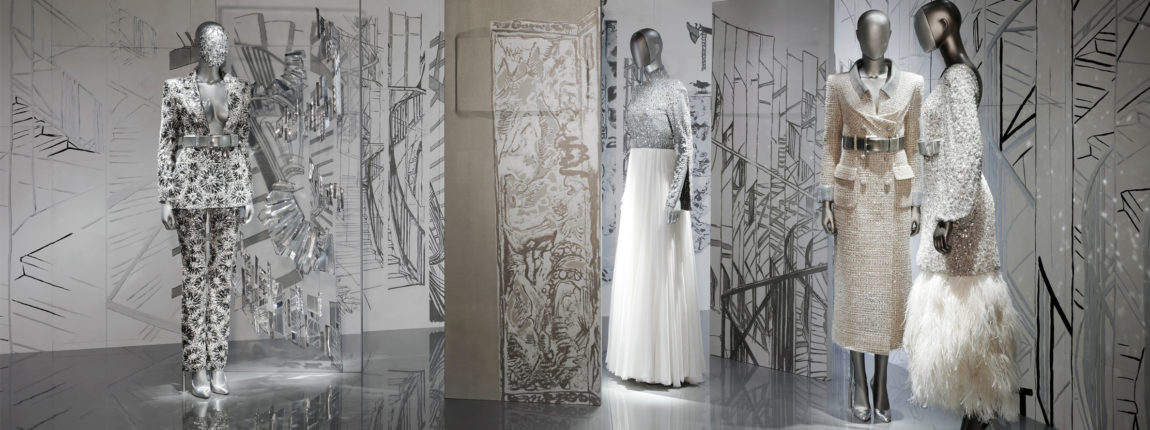



Comments are off this post!